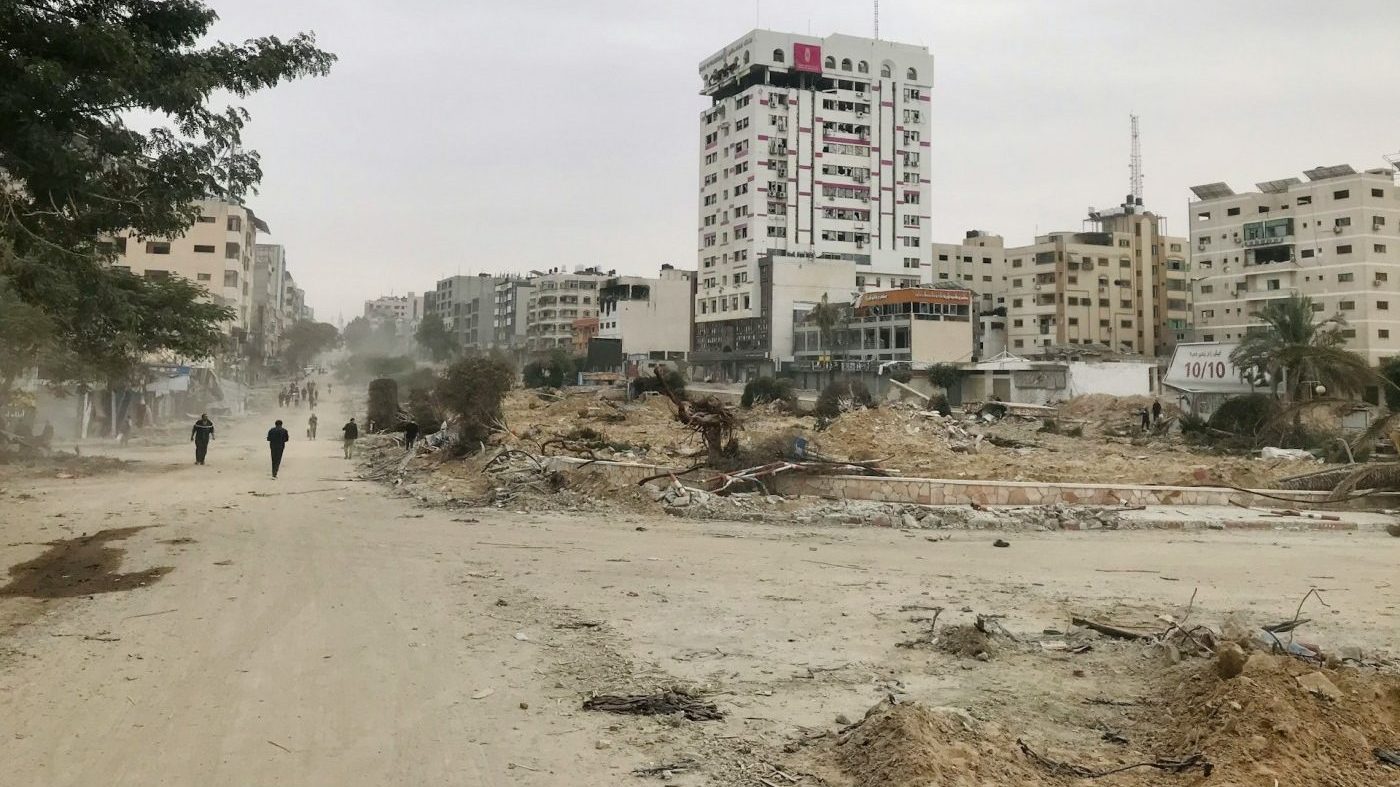The effect of Israel’s war in Gaza on the climate crisis
“The over a million children with their lives on the line in Gaza were already on the frontline of the climate crisis. If you are a child in Gaza, you will have no memory of a life without water shortages, created by political action – the blockade – and inaction – on climate change.” Those were the words of Mohamad Al Asmar, Advocacy & Resource Mobilization Director for Save the Children in the Middle East, speaking at the COP28 climate summit in December, a stark reflection of the catastrophic effects reared upon the climate by Israel’s war in Gaza.
Before the war, the occupied Palestinian territory already existed in a region at the forefront of the climate crisis. The Middle East and North Africa region is projected to face the highest global increase in river floods, crop failures, and droughts, with 90.1 million children found to be at high climate risk and expected to face at least one extreme weather event a year. Following Israel’s siege of Gaza in response to the Hamas-led attacks in Israel on 7 October, the crisis has been exacerbated, dealing calamitous damage to the region’s environment and placing an even greater number of lives at risk.
The war in Gaza has produced a greater carbon footprint than 20 of the world’s most climate-vulnerable nations.
According to analysis by researchers in the UK and the US, in the first 60 days since 7 October, over 281,000 metric tonnes of planet-warming gases were generated from the war, with over 99% being directly attributable to the Israeli ground invasion and aerial bombing of Gaza. This equates to the burning of at least 150,000 tonnes of coal, meaning that in these two months, the war in Gaza has produced a greater carbon footprint than 20 of the world’s most climate-vulnerable nations.
The environmental impact on the atmosphere arguably is superseded, however, by the devastation inflicted through the pollution of Gaza’s water. Following a 16-year land, sea, and air blockade imposed by Israel over Palestine, the state’s development of sustainable water and sanitation infrastructure has been significantly stunted. This, alongside the worrying climate situation Gaza was facing before the war, with drought and flooding as a result of rising regional temperatures, meant that Gaza’s water situation was already in a fragile and precarious position.
Israel’s bombardment has inflamed this issue to the point of humanitarian disaster. Destruction of waste management facilities has caused an estimated 130,000 cubic metres of sewage and wastewater to be dumped daily onto land or into the Mediterranean Sea, flooding the streets of Gaza with sewage water, and increasing the risk of outbreaks of cholera and other gastrointestinal diseases. The threat posed to fresh water sources cannot be overstated, with Gaza’s main source of water, the aquifer, facing the threat of contamination via the dumping of solid waste into porous soil. Combined with the winter rains, the risk of disease to civilians increases as the chance of flooding and mixing of wastewater with rainwater looks ever more possible.
It’s difficult to see the worsening climate emergency in Gaza being resolved any time soon.
The significance of this damage reared upon the climate as a result of the Israeli invasion has prompted the United Nations Environment Programme (UNEP) to commit to carrying out an environmental impact assessment of the war, something necessary for calculating the true extent of the environmental destruction caused. This is something Dr Nisreen Al-Tamimi, the Environmental Quality Authority Chairperson for Palestine, stressed the importance of whilst attending the United Nations Environment Assembly in Nairobi, emphasising the urgent need for such a report to measure the war’s impact, and “to dispatch the necessary teams to investigate possible environmental crimes in the Gaza Strip.”
As violence in the region swells and sources of food and fresh water are eroded, it’s difficult to see the worsening climate emergency in Gaza being resolved any time soon. Even if the violence ceases, the reconstruction project to rebuild the region will no doubt also have a detrimental effect on the climate through contribution to emissions, with an estimated 5.8 million tonnes of carbon emissions being released to construct the necessary materials.
Environmental consequences from all global conflicts are being truly considered.
However, we may take some solace in the fact that the scale of the devastation upon the climate is being taken seriously. UNEP’s environmental impact assessment, in addition to the programme’s Emissions Gap report including conflict and military emissions for the first time, indicates that the environmental consequences from all global conflicts are being truly considered – a small step in the long road of educating nations about the extent of the effect upon the climate from conflict.
At the time of writing, over 34,000 lives have been claimed since 7 October, with at least 33,000 of those being Palestinian. It’s hard to say how many more lives will be claimed as a result of the assault upon the regional climate produced by the war, but through the consequential rising temperatures and increased drought and flooding in the area, we are left to suspect its impact may be felt for generations to come.

Comments